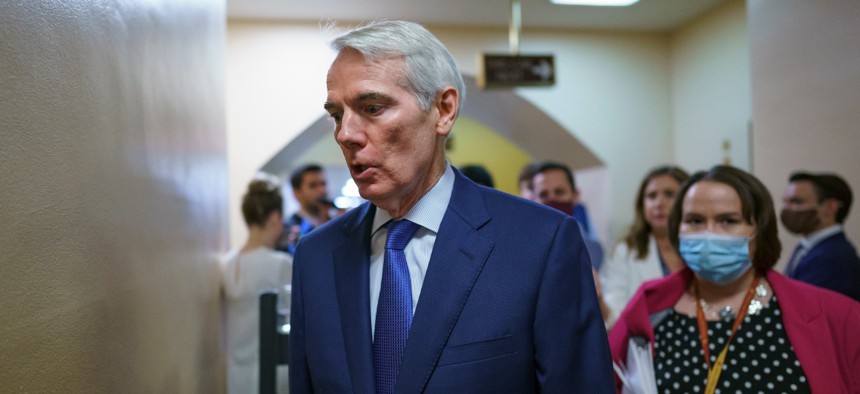Two New Retirement Savings Bills Could Impact TSP
Officials at the Thrift Savings Plan said both bills aimed at making it easier for older Americans to get ready for retirement require changes to be implemented faster than is possible.
A pair of bills working their way through Congress would make it easier for older Americans, including federal employees, to ensure they have enough money saved for retirement, although officials with the federal government’s 401(k)-style retirement savings program say both measures may be too optimistic in their implementation goals.
In the House, Reps. Richard Neal, D-Mass., and Kevin Brady, R-Texas, have sponsored the Securing a Strong Retirement Act (H.R. 2954), colloquially called the SECURE 2.0 Act. Among other changes, the bill would increase the age at which required minimum distributions kick in—when a person is required to start making withdrawals from their retirement account. The current age is 72, but that would increase to 73 on Jan. 1, 2022, and then to 74 in 2029, and 75 in 2032.
Additionally, the bill would increase the annual limit on catch-up contributions from $6,500 to $10,000, but only for people between the ages of 62 and 64. It would stipulate that catch-up contributions can only be made post-tax into Roth 401(k) accounts. And it would allow for employer matches to apply to Roth 401(k) accounts, instead of only retirement programs that allow pre-tax contributions.
On the Senate side, Sens. Ben Cardin, D-Md., and Rob Portman, R-Ohio, introduced the Retirement Security and Savings Act (S. 1770), which has a number of similar provisions. It completely exempts people with less than $100,000 in retirement savings from required minimum distributions, and effective Jan. 1, 2022, it exempts Roth balances from RMDs while the participant is alive.
Also effective next January would be provisions allowing the rollover of Roth IRAs into Roth 401(k) accounts, and it would increase the age at which minimum distributions kick in to 75 in 2032. The bill also would increase the catch-up contribution limit to $10,000 for everyone aged 60 and older.
At a Wednesday meeting of the Federal Retirement Thrift Investment Board, which administers the Thrift Savings Plan, TSP spokeswoman Kim Weaver said that while the agency doesn’t necessarily have any issues with the policies prescribed by the bills, she was concerned that their timetables for implementation were too aggressive, especially as neither are likely to become law until at least the summer.
“On both of these bills, we’re going to be letting them know about our concerns with the timing,” Weaver said. “The House bill was marked up several weeks ago and is awaiting floor action, and the Senate bill they’re not talking about moving on until later this summer. By the time they reconcile the two, it could be well into the fall or early winter, and these will take quite a bit of programming, particularly the Roth changes, which will have an impact on individual agencies’ payroll offices.”
TSP Executive Director Ravindra Deo stressed that the agency’s reluctance is not based solely on its own staff’s ability to move quickly to make the needed changes, although he and Weaver noted it would be particularly difficult as they already are working on transitioning to a new vendor to handle recordkeeping operations, a process that will be complete in summer 2022.
“Our concern is not purely about the work involved for the TSP, but since we are the interface for 114 different payroll providers, our concern is that all of them do everything that they need to,” Deo said. “Making catch-up contributions have to be Roth, that affects how agencies account for things in their regular pay stubs, completely independent of what happens with the TSP. And if participants get employer matching post tax, that has to come from somewhere, and 114 different agencies have to pay that out. There’s a significant burden outside of the TSP, but it all affects the TSP and all TSP participants.”
NEXT STORY: A Mid-Year Chance to Lower Your Taxable Income








